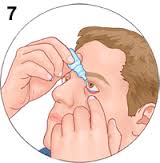Long-term estrogen therapy may accelerate memory loss in women who have Alzheimer’s, according to a recent study at the University of Arizona. The research involved a rat model of Alzheimer’s. Some rats had their ovaries removed and were given hormone replacement therapy (HRT). The rats that received long-term HRT performed poorly in memory tests compared to the rats that did not receive long-term HRT.
Note, trusts should be formed when still fully cognizant.
These findings may confirm human studies that have indicated that although estrogen therapy initially improves memory, it may increase the severity of Alzheimer’s after long-term treatment.
In another study, French scientists discovered a possible link between eating seafood and a reduced risk of dementia. Researchers studied a group of 1,674 people 68 years and older who did not have dementia. Those who consumed fish or seafood at least once a week had a lower risk of suffering from dementia over a seven-year period.
The researchers speculated the fatty acids present in fish and seafood may reduce inflammation in the brain and improve circulation. However, education may also be involved, since highly educated people are more likely to eat fish.
Exercise Cuts Cancer Risk
Everybody knows exercise is one of the best things you can do for your body, but did you know it can also cut your risk of getting cancer? Recent research from Bristol University in the UK indicates exercise may cut the risk of various types of cancer dramatically.
In 37 out of 51 studies reviewed, the risk of colon cancer was cut by 40% to 50% with regular exercise. Breast cancer risk fell by 30%, with post-menopausal women experiencing the greatest benefit. And the risk of lung cancer was reduced by 40%. Endometrial and prostate cancer risks were also reduced.
About 30 minutes of exercise three times per week might be all it takes to experience these reduced cancer risks.
Source: NEI 10-16-02
The CDC recently released this list of true and false statements about the flu shot:
“The Flu is just like a bad cold.”
(FALSE)
Influenza is far more dangerous than a bad cold. Each year about 114,000 people in the US are hospitalized and about 20,000 die because of the flu. Most who die are over 65 years old, but small children are also at high risk.
“The shot can give you the flu.”
(FALSE)
Though you may still get the flu even after receiving the shot, the shot itself cannot give you the flu. The vaccine is made from killed influenza viruses.
“The side effects of the shot are worse than the flu.”
(FALSE)
The worst side effect you’re likely to get is a sore arm. The risk of an allergic reaction is far less than the risk of severe complications from influenza.
“Not everyone can take the flu shot.”
(TRUE)
Those who are allergic to eggs, are ill with a high fever, or have had a severe reaction to the vaccine in the past should not take the shot.
“December is too late for the flu shot.”
(FALSE)
The shot can be effective before or during the flu season. While the best time to get the shot is October or November, a flu shot in December or later will still protect you against the flu.
 ous year.
ous year. es, according to a recent study that shows Children of centenarians are less likely to have life-shortening illnesses such as heart disease, high blood pressure, and diabetes. Individuals who have had at least one parent live to the age of 100 also tend to weigh less and have lower body mass index than individuals whose parents died at 73.
es, according to a recent study that shows Children of centenarians are less likely to have life-shortening illnesses such as heart disease, high blood pressure, and diabetes. Individuals who have had at least one parent live to the age of 100 also tend to weigh less and have lower body mass index than individuals whose parents died at 73.

